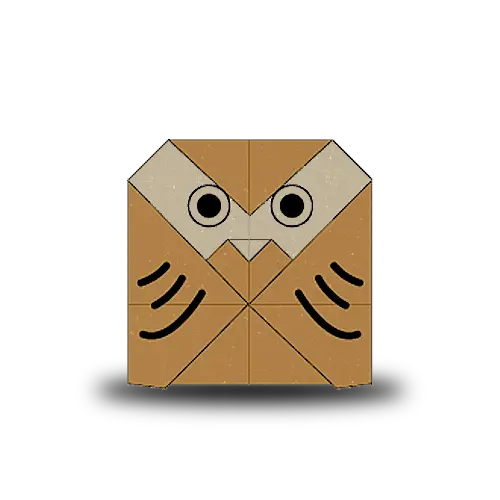
Easy Origami Owl Folding
Easy Origami Owl Folding is a delightful craft activity that brings
Easy Origami Owl Folding” is a delightful craft activity that brings together the art of paper folding and the charm of owls. This creative endeavor allows enthusiasts of all ages to create charming owl figures using the ancient Japanese origami technique.
With just a single sheet of paper, beginners and experienced crafters alike can follow simple step-by-step instructions to transform flat paper into intricate and three-dimensional owl sculptures. The process involves precise folds and careful attention to detail, resulting in a satisfying and visually pleasing result.
Easy Origami Owl Folding, From the elegant curves of the wings to the expressive eyes, each fold contributes to capturing the essence of these majestic birds.
Easy Origami Owl Folding not only offers a rewarding creative outlet but also serves as a wonderful introduction to the world of origami, allowing individuals to explore the beauty of paper art while creating adorable owl masterpieces.
Let's Fold
Start by folding our paper diagonally from corner to corner, then unfold it. Next, fold it diagonally again from the other corners and unfold.
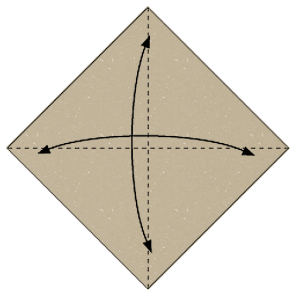
Rotate the square paper by 45 degrees and fold the top pointed end down to about one-third of the way, as shown in the picture.
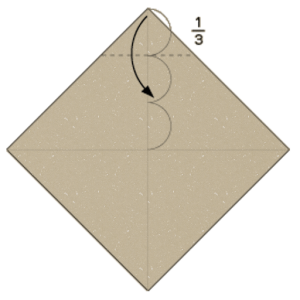
Fold the bottom pointed end up to align precisely..
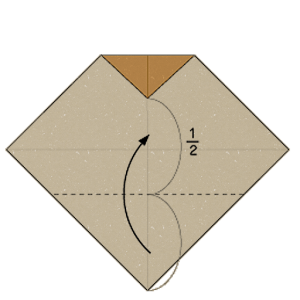
Following the arrows in the image, fold the right and left pointed ends inward.
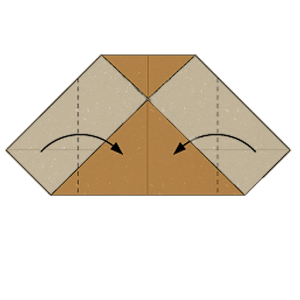
To create the owl’s beak, fold the beak section as shown in the picture.
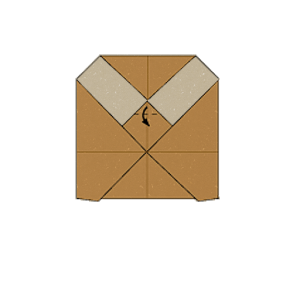
Use a black pen or pencil to color or draw the owl’s eyes and wings as desired.
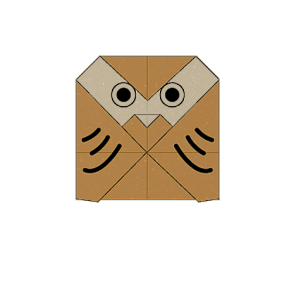
Origami Owl: A Symbol of Grace and Creativity
Origami, the ancient art of paper folding, has captivated people around the world for centuries. Among the myriad of origami designs, the origami owl stands out as a charming and symbolic creation. Crafted from a simple square piece of paper, the origami owl embodies both grace and creativity, making it a favorite among enthusiasts of all ages.
The art of origami dates back to ancient Japan, where it was originally practiced as a form of ceremonial expression. Over time, it evolved into a recreational and educational activity, spreading to various cultures and adapting to modern tastes. The origami owl, with its distinctive features, has become a beloved model, appreciated for its elegance and symbolism.
Creating an origami owl is an intricate yet rewarding process. With precise folds and delicate maneuvers, a flat sheet of paper transforms into a three-dimensional representation of this nocturnal creature. The first step involves folding the paper diagonally, forming a triangle, which is then unfolded. This step establishes the initial creases required for the subsequent folds. Next, the paper is folded diagonally from the opposite corners and then unfolded, creating additional reference points. These folds lay the foundation for the owl’s distinct form.
Rotating the paper by 45 degrees, the top pointed end is folded down to approximately one-third of the way. This fold not only defines the owl’s head but also sets the proportions for the body. The bottom pointed end is then folded up, aligning precisely with the top edge. These preliminary folds begin to hint at the owl’s recognizable silhouette.
The essence of the origami owl emerges as the right and left pointed ends are expertly folded inward, intersecting at the center. These folds define the wings and create a visual contrast between the wings and body. As the shape takes form, the origami owl starts to come to life.
The intricate details that truly characterize the owl are expressed in the following steps. By folding specific sections of the paper, such as the top layer of the head, the owl’s distinctive facial features start to emerge. A final touch brings out the owl’s beak, adding a touch of character to the creation. With the body structure in place, the owl is almost complete.
While the traditional origami owl design is striking in its simplicity, there is room for personalization and creativity. Enthusiasts often add their unique flair by incorporating colors, patterns, or additional embellishments. Some even go a step further by using different paper textures to add depth and variety to their creations.
Origami owls transcend mere paper-folding; they carry symbolism and cultural significance. In many cultures, owls are associated with wisdom, intuition, and mystery. This symbolism adds a layer of depth to the art, making the origami owl not just a decorative item but a meaningful representation of ideas and concepts.
In conclusion, the origami owl is a testament to the beauty that can be created through the delicate art of paper folding. With each precise fold, an ordinary piece of paper is transformed into a graceful and symbolic creature. As one engages in the process of creating an origami owl, they not only gain a greater appreciation for the art form but also a sense of accomplishment in crafting something intricate and beautiful. Whether displayed as a standalone piece or used as a decorative element, the origami owl continues to inspire, captivate, and remind us of the limitless possibilities that can arise from a single sheet of paper.
 Fun and easy-to-difficult folding all kinds of Origami paper
Fun and easy-to-difficult folding all kinds of Origami paper